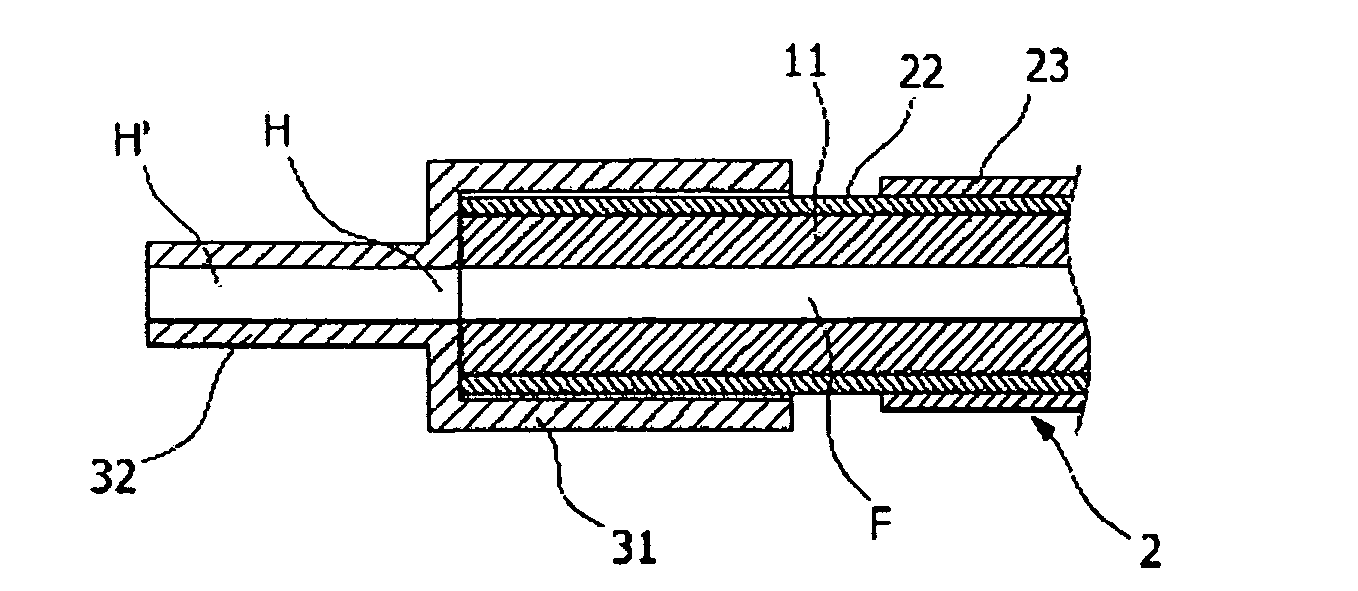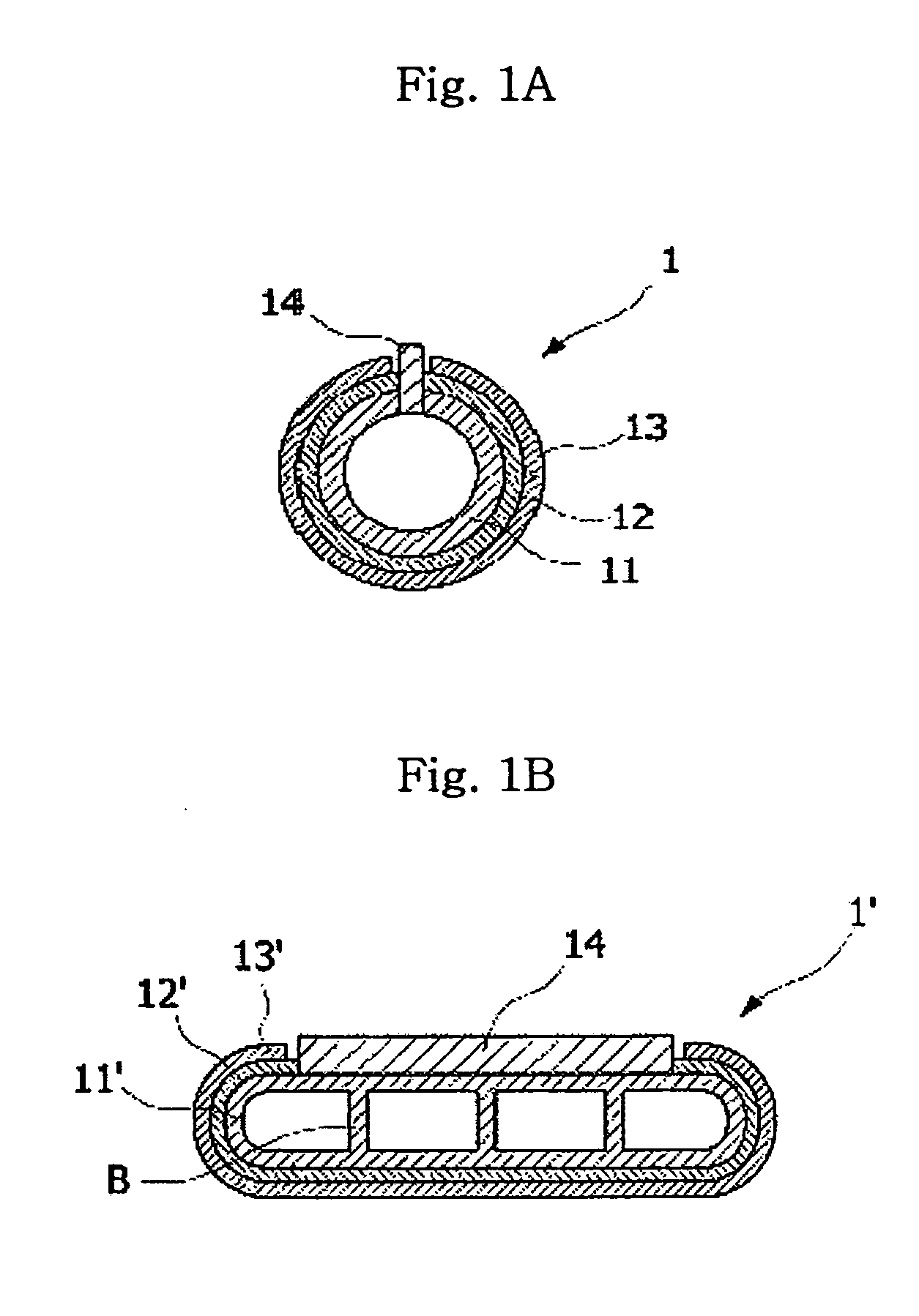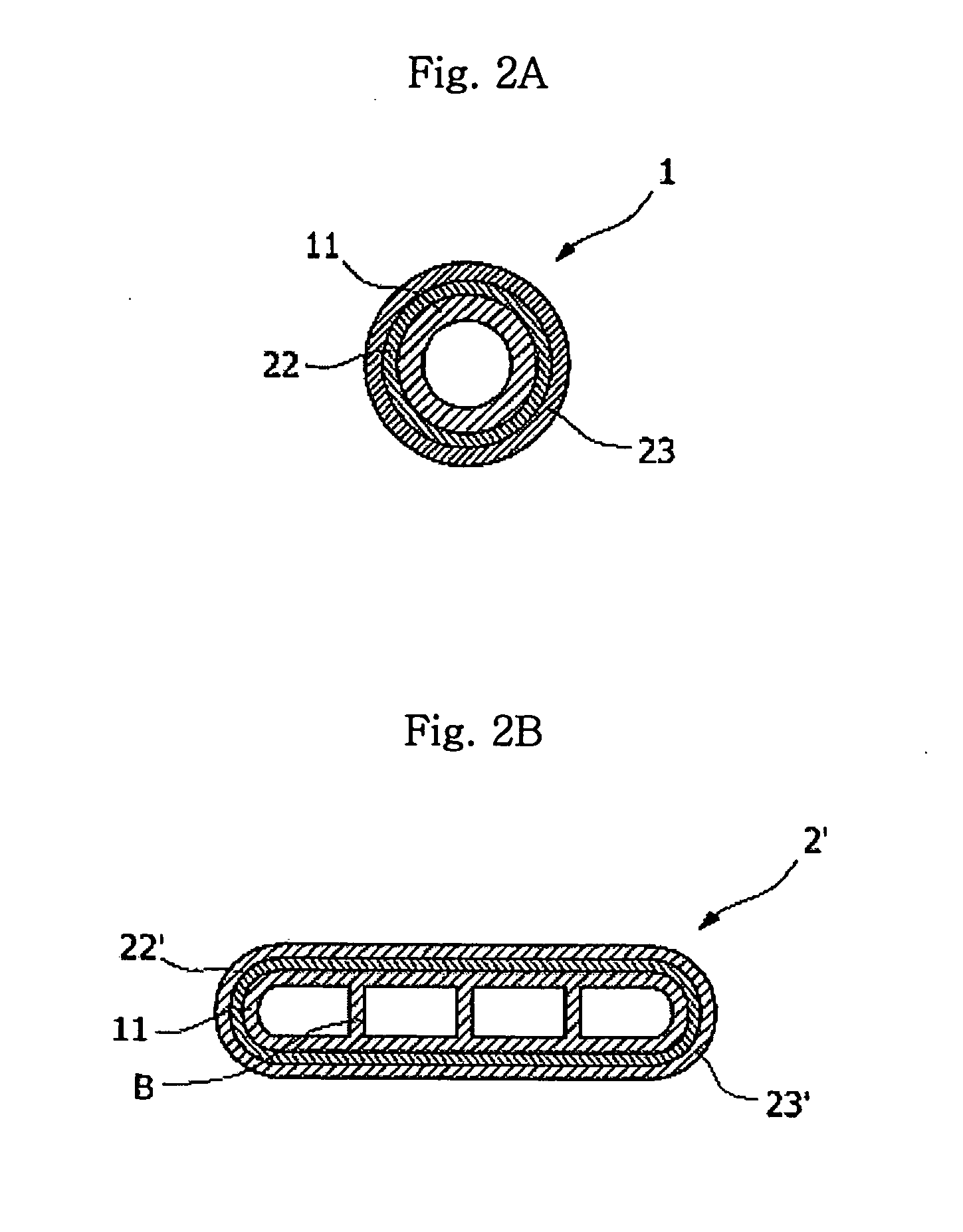Sealing element for anode-supported tubular solid oxide fuel cell and sealing method using the same
a technology of solid oxide fuel cell and sealing element, which is applied in the direction of cell components, final product manufacturing, sustainable manufacturing/processing, etc., can solve the problems of difficult to completely seal the both ends of the fuel cell, the sealing portion is weak against thermal impact, and the anode cannot directly collect electric charges, etc., to prevent the metal from being oxidized and reduce the heating time
- Summary
- Abstract
- Description
- Claims
- Application Information
AI Technical Summary
Benefits of technology
Problems solved by technology
Method used
Image
Examples
Embodiment Construction
[0051]Hereinafter, a preferred embodiment of the present invention will be described with reference to the accompanying drawings. In the following description and drawings, the same reference numerals are used to designate the same or similar components, and so repetition of the description on the same or similar components will be omitted.
[0052]FIGS. 3A to 3C are perspective and sectional views illustrating an anode-supported cylindrical solid oxide fuel cell (SOFC), and FIGS. 4A to 4E are perspective and sectional views illustrating an anode-supported flat tubular SOFC.
[0053]As shown in FIGS. 3A to 4E, the present invention provides two types of sealing elements according to the shape of the tubular fuel cell inserted into the sealing element. When the sealing element is incorporated with a cylindrical fuel cell 2, the sealing element has a metallic cap structure and is coupled to both ends of the fuel cell 2. In this case, the sealing element includes a coupling tube 31 having a ...
PUM
 Login to View More
Login to View More Abstract
Description
Claims
Application Information
 Login to View More
Login to View More - R&D
- Intellectual Property
- Life Sciences
- Materials
- Tech Scout
- Unparalleled Data Quality
- Higher Quality Content
- 60% Fewer Hallucinations
Browse by: Latest US Patents, China's latest patents, Technical Efficacy Thesaurus, Application Domain, Technology Topic, Popular Technical Reports.
© 2025 PatSnap. All rights reserved.Legal|Privacy policy|Modern Slavery Act Transparency Statement|Sitemap|About US| Contact US: help@patsnap.com



